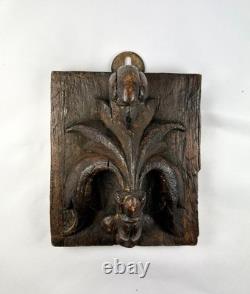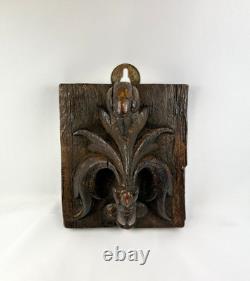
- Index
- Age
- Features
- 3d Effect (3)
- Bas-relief (3)
- Carved (5)
- Carvings (306)
- Decorative (10)
- Framed (7)
- Fretwork (5)
- Hand Carved (16)
- Hand Carving (4)
- Handcarved (51)
- Handmade (9)
- High Relief (11)
- Limited Edition (8)
- One Of A Kind (ooak) (14)
- Reclaimed (196)
- Reclaimed, Salvage (266)
- Recycled Wood (6)
- Relief (8)
- Salvage (361)
- Signed (7)
- ... (3535)
- Maker
- Artist Signed (3)
- China (19)
- Chinese (7)
- Evelyn Ackerman (3)
- France (313)
- French (178)
- French Hand Carved (4)
- Hand Carved (7)
- Hand Made (21)
- Hand Made In France (8)
- Handemade (3)
- Handmade (98)
- India (4)
- Jungwirth (4)
- Made In France (25)
- Mogul Interior (3)
- Mogulinterior (4)
- Tribal (9)
- Unknown (113)
- Wood Carver (3)
- ... (4002)
- Material
- Beech (23)
- Carved Wood (9)
- Chestnut (8)
- Hand Carved Wood (150)
- Mango Wood (13)
- Oak (107)
- Oak Wood (26)
- Oak, Wood (11)
- Solid Oak (16)
- Solid Oak Wood (17)
- Solid Walnut (16)
- Solid Walnut Wood (34)
- Solid Wood (13)
- Teak Wood (36)
- Walnut (109)
- Wood (1145)
- Wood Solid Walnut (14)
- Wood, Oak (7)
- Wood, Paint (8)
- Wooden (64)
- ... (3005)
- Size
- 10” X 10” (2)
- 12 Inch Dia. (2)
- 12\ (2)
- 14 Inch X 35 Inch (4)
- 14\ (2)
- 21.65\ (2)
- 24 X 11 X 3 / 4 (3)
- 24\ (3)
- 24x12 (3)
- 40 X 12 X 1 (2)
- 76 X 21 X 5 Cm (2)
- Giant (over 60in.) (14)
- King (6)
- Large (57)
- Large (up To 60in.) (19)
- Medium (94)
- Medium (up To 36in.) (38)
- Queen (4)
- Small (6)
- Small (up To 12in.) (7)
- ... (4559)
- Type
- Carved Panel (16)
- Carved Wood Panel (17)
- Carving (186)
- Carvings (17)
- Door (25)
- Doors (19)
- Figurine (26)
- Light Sculpture (31)
- Panel (151)
- Panels (16)
- Plaque (17)
- Plaques / Signs (22)
- Room Divider (18)
- Sculpture (145)
- Statue (40)
- Wall Art (28)
- Wall Hanging (17)
- Wall Panel (49)
- Wall Sculpture (17)
- Wood Carving (111)
- ... (3863)
Rectangular Open Carved Wood Panel 16th Century







This small rectangular panel, measuring approximately 5 inches by 4.5 inches, dates to the 16th century and is open-carved with a zoomorphic scroll motif. The carving is highlighted by the head of the Pelican in her piety, a well-known Christian symbol representing sacrifice, devotion, and nurturing love. Artistic Features & Symbolism The Pelican in her piety is depicted with outstretched wings, traditionally symbolizing the mother pelican feeding her young with her own blood, representing Christ's sacrificial love for humanity. Zoomorphic scroll motifs feature delicate, flowing lines that enhance the natural form and provide an elegant, organic backdrop to the central figure of the pelican.
Traces of residual paintwork remain, providing evidence of the panel's original vibrant finish, which would have enhanced its visual appeal in its original setting, possibly a church or private devotional space. Cultural & Historical Context The 16th century was a time when religious iconography played a central role in European art, particularly in Christian devotional works, where symbols like the pelican were often used to represent Christ's sacrifice and spiritual themes. Pelicans in piety were popular subjects in medieval and Renaissance art, frequently depicted in wooden carvings, altarpieces, and liturgical art.
The zoomorphic style reflects Renaissance influences in European carving traditions, which often blended natural forms with symbolic meaning. Condition & Display The panel retains subtle traces of paintwork, contributing to its historical and aesthetic value while indicating its age and previous use. Its small, compact size makes it an ideal collectible or decorative piece, particularly when mounted or framed for display. A Rare & Collectible Renaissance Artifact This 16th-century carved panel featuring the Pelican in her piety is an exceptional piece for: Collectors of Renaissance religious art. Art enthusiasts interested in symbolic Christian iconography. Museums and galleries specializing in medieval and Renaissance religious art. With its intricate carving, historical depth, and spiritual significance, this pelican panel offers a unique and valuable connection to the devotional art of the 16th century, making it a highly collectible and meaningful addition to any collection of religious artifacts.
